Yosemite National Park is a remarkable location, and the best hikes in Yosemite showcase that fact. They are walks that will have you gazing at the tumbling water of Bridalveil Falls, looking out over the granite rock of Half Dome or El Capitan, the climbing wall now synonymous with Alex Hannold, or looking out over all of those sites from Tunnel View, a legendary roadside viewpoint in Yosemite.
While Tunnel View doesn't actually require any hiking, we still think the best vistas in this iconic national park are best reached by foot. Get further from the crowds and the landscape imprints deeper; the stillness of the scene singing to the soul.
Yosemite is a place of rest, a refuge from the roar and dust and weary, nervous, wasting work of the lowlands.
As John Muir, father of the US National Parks, wrote of Yosemite, this "is a place of rest, a refuge from the roar and dust and weary, nervous, wasting work of the lowlands, in which one gains the advantages of both solitude and society. Nowhere will you find more company of a soothing peace-be-still kind."
Muir became so enamoured by the ecosystems of Yosemite that it led him to conservation. The three-night camping trip he took with President Theodore Roosevelt in Yosemite in 1903 shaped US conservation policy. In 1906, Roosevelt would sign a federal law making Yosemite Valley and Mariposa Grove part of the Yosemite National Park. “Climb the mountains and get their good tidings. Nature’s peace will flow into you as sunshine into trees,” the conservationist wrote.
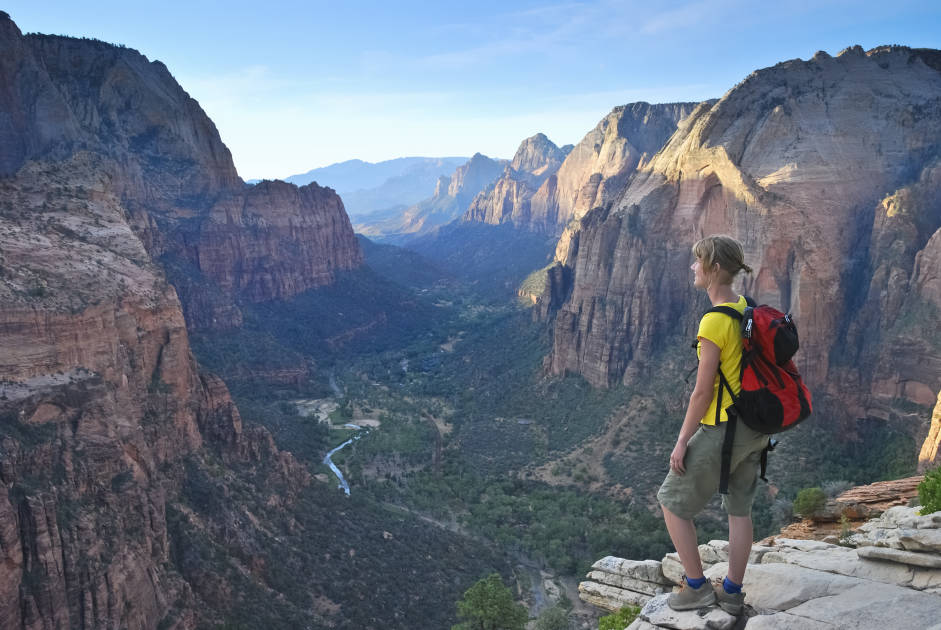
In this guide to the best day hikes in Yosemite, we’re going to look at walks that will allow you to do just that, immersing yourself in that same landscape; of trees, mountains and lakes; of tough climbs - up to remarkable viewpoints.
We've selected these five routes as the best day hikes in Yosemite National Park:
- The Half Dome Trail
- Snow Creek Trail
- Columbia Rock & Upper Yosemite Falls Trail
- The Four Mile Trail
- Sentinel Dome
It’s important to note that these route descriptions are only short summaries, designed to inspire but not to serve any navigational purpose. They are not intended to guide you on the route and further mapping and planning (or a local guide!) will be required if you want to safely walk any of the trails featured.
Here are five of the best hikes in Yosemite National Park.
5 of the Best Day Hikes in Yosemite National Park: Mapped
Yosemite is in California's Sierra Nevada Mountains, 32 miles east of Mariposa and a five-hour drive north of Los Angeles, or four-hour drive east from San Francisco. Yosemite is a large space for sure, but it’s not absolutely enormous in terms of US national parks. At 1,880 miles² (4,869km²), it's the 16th largest national park in the US. The Yosemite Falls are also one of the latest waterfalls in the world, crashing down the granite rock from 739m (2,425ft).
5 of the Best Hikes in Yosemite
1. The Half Dome Day Hike

- Start/Finish: Happy Isles (Yosemite Valley shuttle stop #16), out-and-back
- Distance: A 16-mile (27km) round trip
- Walking time: 10-12 hours
- Difficulty: Challenging
- Best for: An unique Yosemite summit experience
This legendary route will take you all the way to the top of the Half Dome, one of the most iconic sites in all of Yellowstone National Park. It’s not easy though. In fact, from the valley floor, you're looking at around a 16-mile round trip with a cable rope to take you to the top which is sure to test your head for heights.
It's worth noting that you need a permit to hike Half Dome. These permits are balloted, and have been since 2013, before which large crowds on the cables were creating a particularly dangerous environment going up the steep slope. Hundreds of permits are given out a day but demand is high. You enter the ballot in March and find out the result in April. Around a quarter of people who apply get a permit.

This route starts on the valley floor, taking a beautiful path around the Vernal Fall and Nevada Fall, then continuing behind the Liberty Cap rock. After that you'll climb up through Sequoia forests and up the subdome, and to the top of the Half Dome via the cables. In total it’s a climb of over 1,463m (4,800 feet).
The hike up the Half Dome Trail starts on either the Mist or the John Muir Trail - two other great hiking routes in Yosemite (seriously, if you miss out on the ballot for Half Dome, it's worth checking them out in full). If you go up one, you can come down the other, meaning that this route not only gets you to the Half Dome and the remarkable viewpoint at the top, looking out over all Yosemite, you also get to sample two of the other best hiking trails in Yosemite National Park.
The misty staircase to Vernal Fall is remarkable, the cable route steep, smooth and slippery. Don't underestimate it. The Muir Trail on the way back down is a little more gradual, with great views out over the Nevada Fall. This is one of the best day hikes in Yosemite National Park - but also one of the most challenging.
2. The Snow Creek Trail
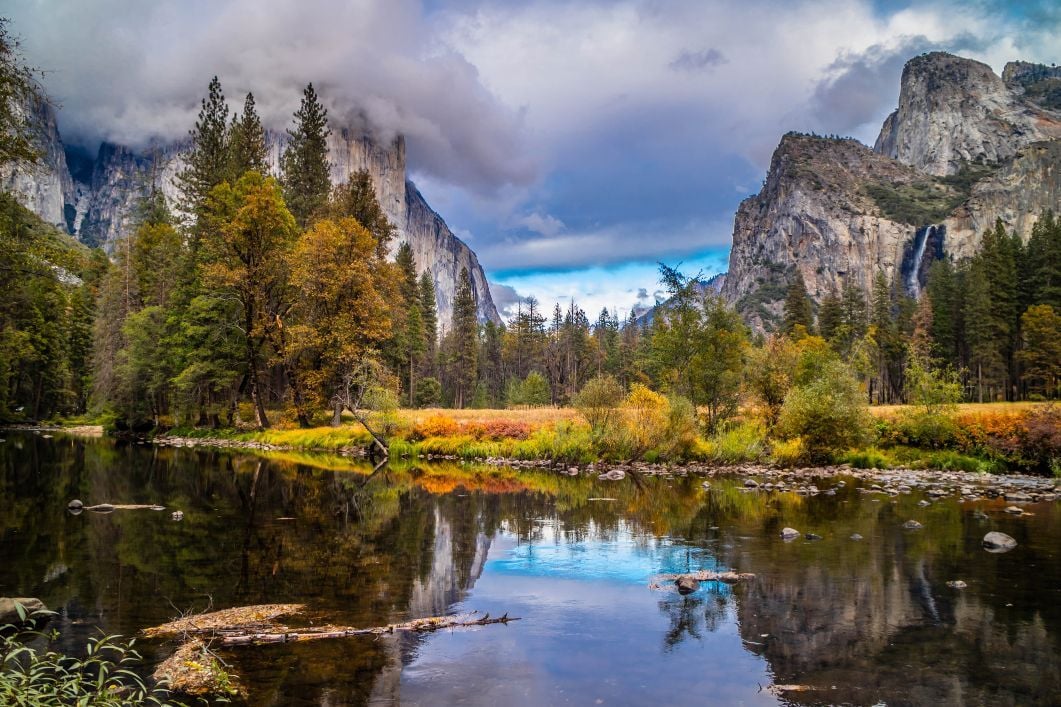
- Start/Finish: Mirror Lake Trailhead (Yosemite Valley shuttle stop #17), out-and-back
- Distance: A 9.4-mile (15km) round trip
- Walking time: 6-7 hours
- Difficulty: Challenging
- Best for: Switchback punishment, with glorious returns
This is another big climb from the valley floor of Yosemite up to big mountain views. Make no mistake about it, the Snow Creek trail demands a lot from you.
Start on the Mirror Lake Trail, you will soon come to the junction of the Snow Creek Trail. From here, ascend out of the Tenaya Canyon (uphill, very much uphill), taking switchback after switchback as you climb until you eventually reach a viewpoint including Half Dome, Quarter Domes and Clouds Rest.

What's great about this trail is that though the climbing is tough and steep, you get rewarded with views which unfold as you go. After that vista from the switchbacks, you'll only going to climb higher and get even better vantage points on Yosemite.
To get the best view though, the challenge continues on a path that asks you to climb 822m (2,700ft) relatively swiftly. Is this the toughest route running out of the Yosemite Valley? Quite possibly. Does it also offer some of the best views of Half Dome and the Tenaya Creek Canyon in the entire national park? You know it.
3. Columbia Rock & Upper Yosemite Falls Trail
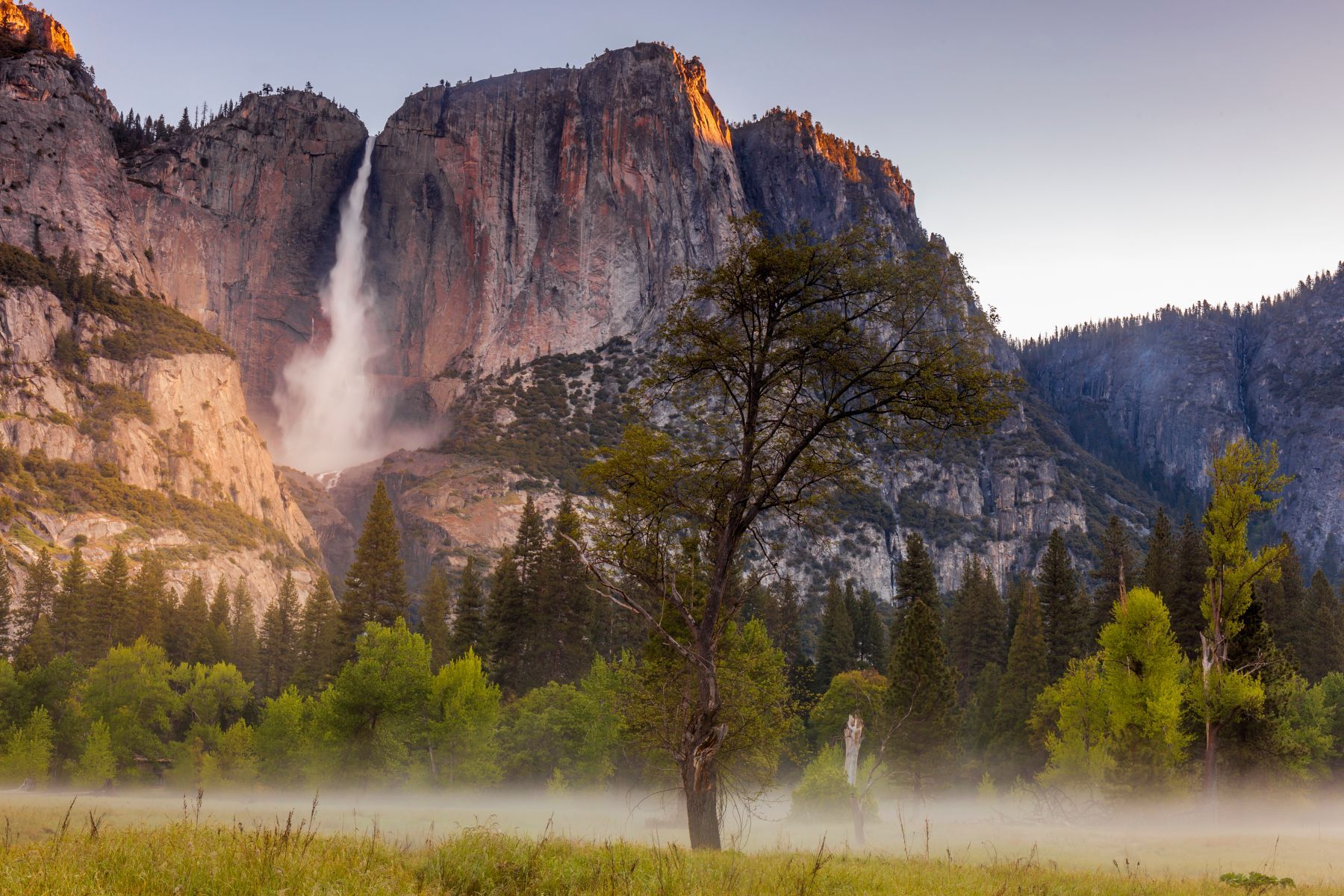
- Start/Finish: Camp 4 area (near Yosemite Valley shuttle stop #7 and El Capitan Shuttle stop #2)
- Distance: A 7.2-mile (15km), round trip
- Walking time: 6-10 hours
- Difficulty: Challenging
- Best for: Chasing waterfalls
The Yosemite Falls trail is one of the oldest in the national park, dating all the way back to 1873. To be fair, if you were going to build a trail to somewhere, this isn't a bad place to do it. The Yosemite Falls are North America's tallest waterfall, and the trail leads you all the way to the top.
This is actually one of the only places you can fit Yosemite Falls and Half Dome in the same photograph.
You may be sensing a theme in this list now, but this is another trail which is going to start you off on the valley floor and switchback you all the way up to a very high viewpoint. When you climb 304m (1000ft) to Columbia Rock you'll get a real big lookout point. This is actually one of the only places you can fit Yosemite Falls and Half Dome in the same photograph.
Next it's a fairly simple path for another 0.5 miles before the switchbacks resume and you head to the top of Yosemite Falls. Make no mistake, this staircase workout is going to be tough. At the summit you'll find the small creek that feeds the mighty waterfall, and you can extend the hike to Yosemite Point or Eagle Peak.
It's worth noting that there isn't water on these walls year round. It depends on rainfall. The best months to go to see the falling water are May, June, July and occasionally in the fall or Spring. If you're after an easier route that offers great views of the falls, consider the Lower Yosemite Falls trail. The Upper Yosemite Falls route can take anywhere from six to 10 hours depending on pace.
4. The Four Mile Trail
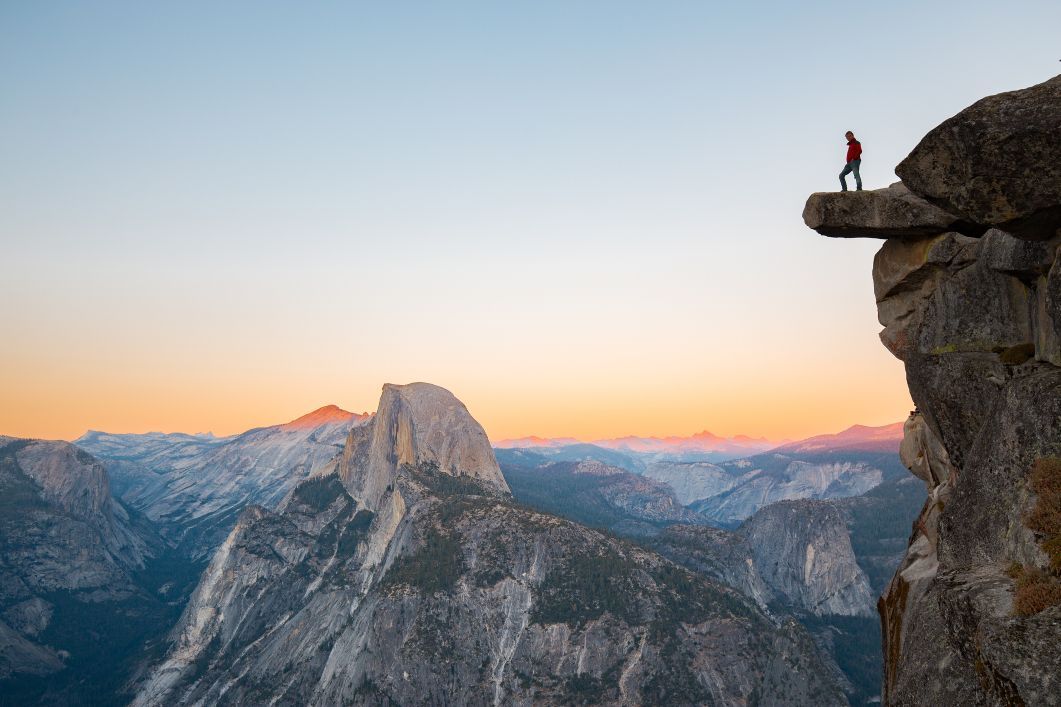
- Start/Finish: Four Mile Trailhead along Southside Drive (Valleywide Shuttle stop #11), out-and-back
- Distance: A 9.6-mile (15.4km) round trip
- Walking time: 6-8 hours
- Difficulty: Challenging
- Best for: Vertical views of Yosemite, stacked on top of one another
Ah, finally, a nice and easy four-miler, right? Nope. For a starter, the Four Mile Trail is actually more like five miles, making for an all-rounder just short of 10 miles, and demanding a whole lot of climbing. Hey, look, the lower routes can be lovely but the best views and the best trails in Yosemite are going to be a challenge.
If you're wondering how it got its name, the trail was four miles back when it was first completed in 1872. There was also a toll on it though. So it's got longer, sure, but you don't have to pay to use it. This is a strenuous walk, but you'll be rewarded with fantastic views of the valley, El Capitan, Yosemite Falls and Half Dome.
The view of the Yosemite Valley from Union Point, over the 1,828m (6,000ft) mark is well worth a stop and a gaze.
You'll finish the hike at the famous Glacier Point, where there's a snack stand in summer. One interesting return route, rather than going back the way you came, is to instead continue on for 7.5 miles on the Panorama Trail, which will bring you out at the Happy Isles Trailhead and turn this into a thru-hike.
Alternatively, you could also take the easy route and book a bus to take you up to Glacier Point, then hike back down to the valley to get the views without the effort. We won't tell if you don't, but expect crowds at Glacier Point - it's an attraction.
5. Sentinel Dome
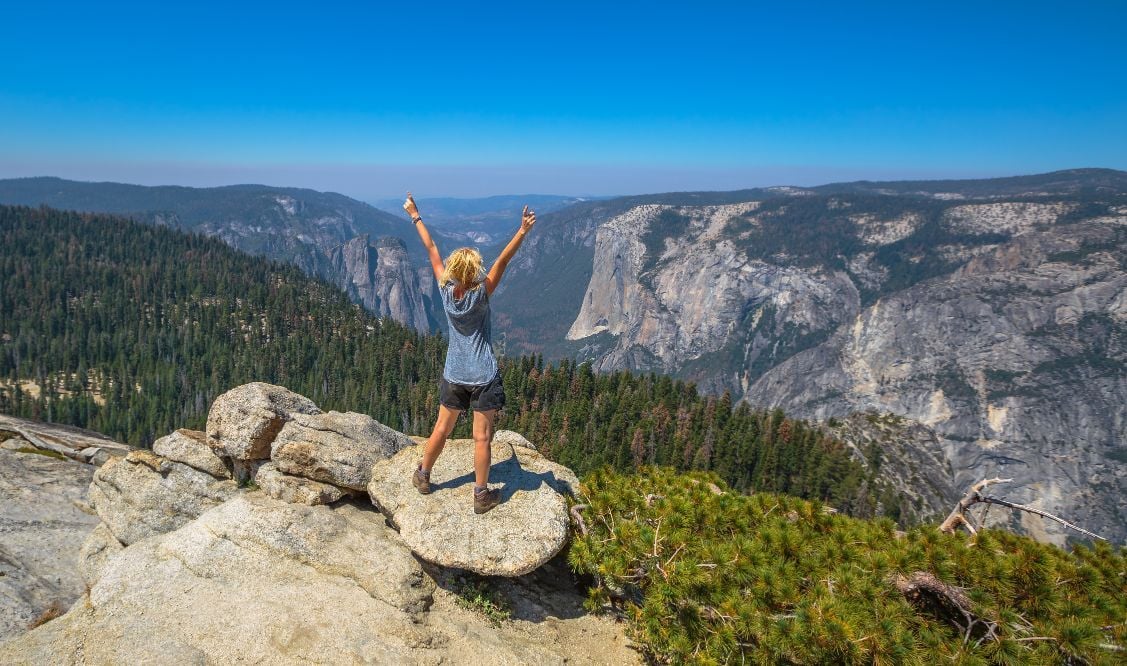
- Start/Finish: Parking Lot on Glacier Point Rd.
- Distance: 2.2 mile (3.5km) round trip
- Walking time: 1-2 hours
- Difficulty: Easy
- Best for: Great views with little hiking effort
Only a 2.2 mile round trip... this one must be an easy Yosemite hike, right? Well, yes! We're ending on the accessible, short hike to Sentinel Dome, which gives you jaw-dropping views of the Yosemite Valley without the same sort of arduous climbing that a lot of the other routes on this list demand. There's probably no easier way to earn views this good in the national park.

At the summit you'll see the fallen Jeffrey Pine. Made famous after Ansel Adams captured the truly unique shape of the tree in a photo in 1940. It fell in 2003, though it had been dead for decades, but remains at the summit of the Sentinel.
Once you've finished your relatively simple hike, with a short, steep section to make you at least earn what's coming, you'll get to look out to El Cap, Yosemite Falls, the Valley and to the east, Half Dome and Clouds Rest.
What animals live in Yosemite National Park?
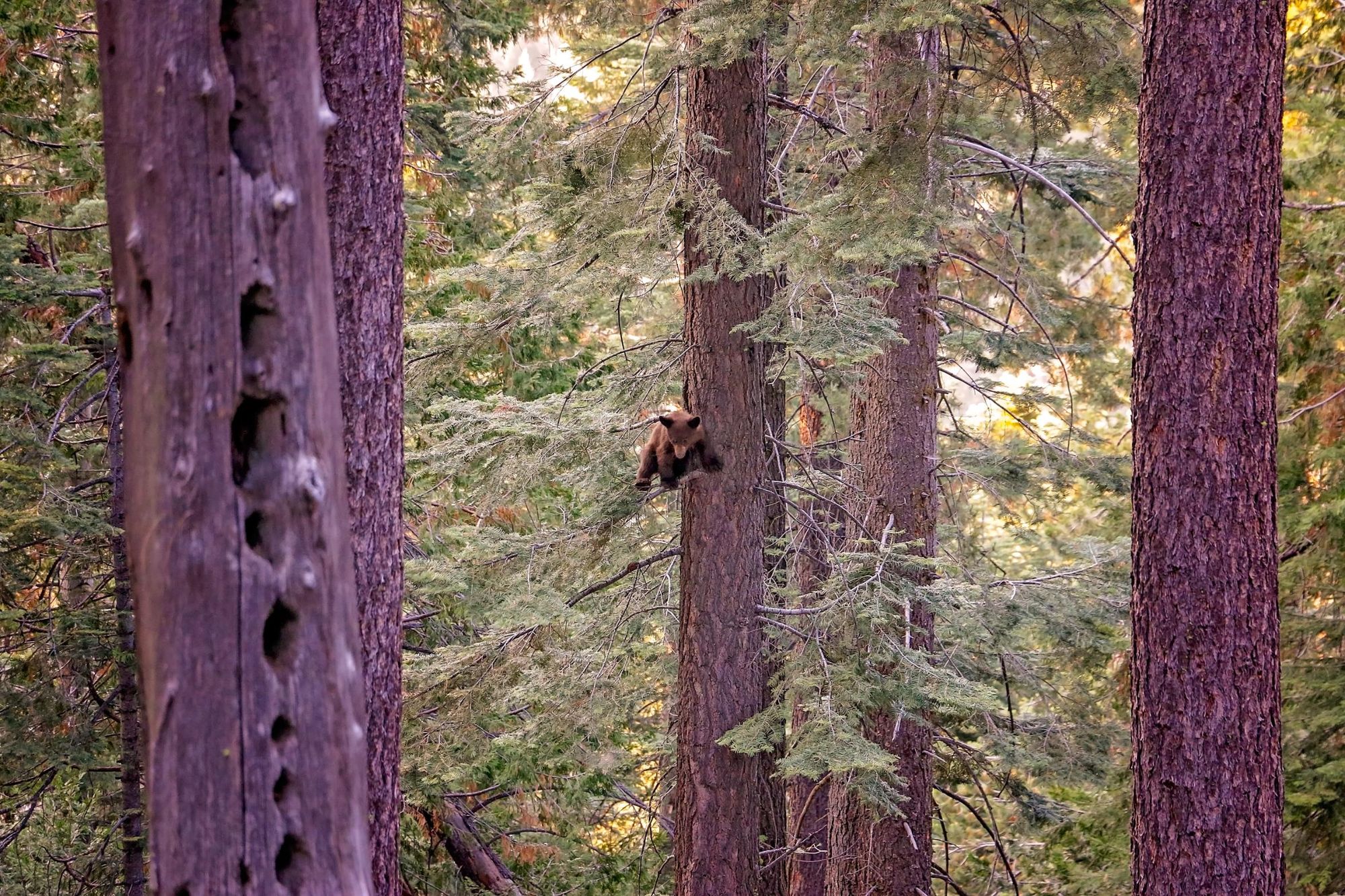
There are over 400 species of animals in Yosemite National Park, including approximately 90 species of mammals and over 260 types of bird. Perhaps the stars of the show are the black bears, which are of real interest to most visitors, though the Sierra Nevada red fox is also absolutely adorable. Lookout too for Sierra Nevada bighorn sheep, which are back in the range after an absence of 100 years, as well as mountain lions and the illusive Pacific Fisher (tree-dwelling carnivores which look a little like pine martins).
There are also fascinating amphibians; notably Californian red-legged frogs and the Sierra newt, while in the sky, you can see American dippers, brightly-coloured Western tanagers, as well as California-spotted and great gray owls.
Where to stay around Yosemite National Park?
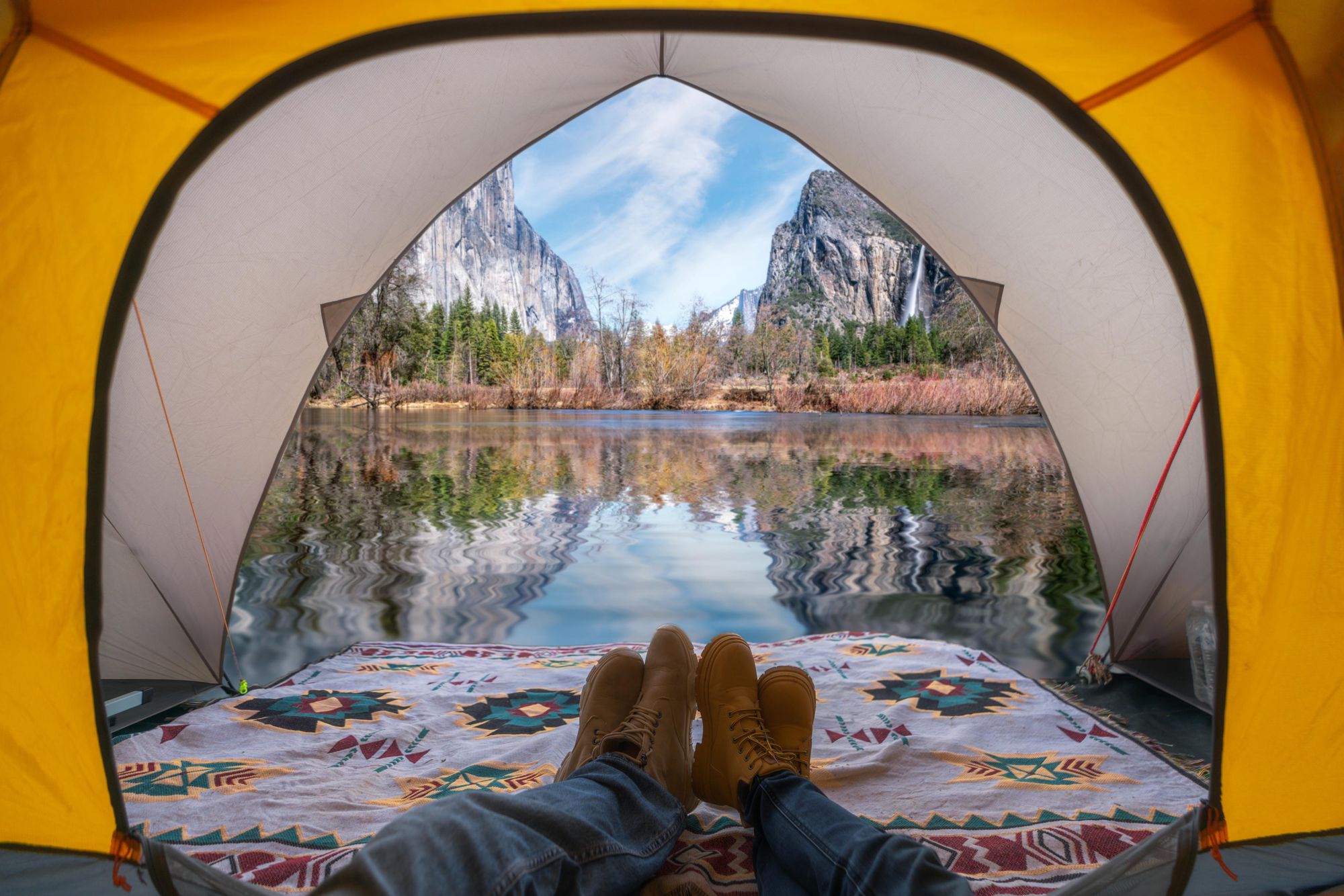
There are a full 13 campgrounds which you can stay in across Yosemite National Park, and we would very much reccomend doing so. If you're going to visit Yosemite, it's because of the natural beauty in the area, and this is the best way to immerse yourself in that - in the style of John Muir and President Roosevelt.
Every campsite in Yosemite needs reserved in advance. The most popular campsites, in Yosemite Valley, need booked five months ahead and are operated by a lottery system. Other campsites can be booked at one-week's notice. Many are on a two week reservation cycle. There are also three first-come, first-serve campsites available in late Autumn, winter and early spring.
Fees range from $10-36 per night to use the campgrounds, with most costing $36.
Wild camping is also actually legal in much of Yosemite, as long as you have a wilderness permit. The National Park Service note: "Camping is not permitted between Yosemite Valley and Little Yosemite Valley. If you would like to camp in a dispersed wilderness setting, you must camp beyond the Half Dome/John Muir Trail junction or beyond Moraine Dome (toward Merced Lake)."
Of course, there are also a whole host of fantastic lodges in Yosemite National Park. Some of the best include the Evergreen Lodge, the Majestic Yosemite Hotel, the Yosemite Bug Rustic Mountain Resort and the rustic AutoCamp Yosemite, which offers a luxury camping vibe, as well as glamping options.
What to eat in Yosemite National Park?
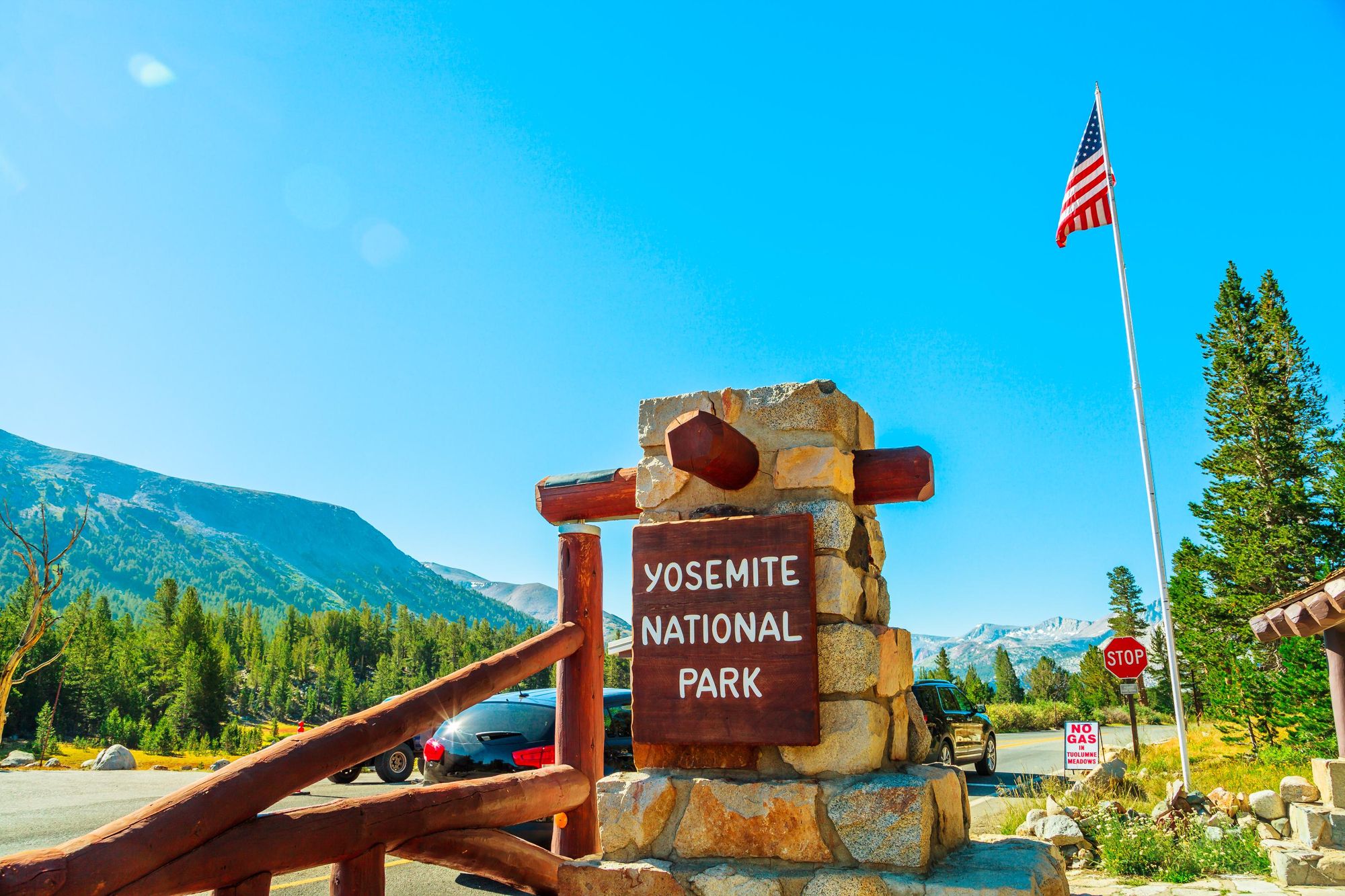
There are various places to eat around Yosemite National Park, from snack top ups like the Village Store to pizzerias and fine-dining experiences. The latter is at The Ahwahnee, an extremely luxiours grand banquet hall also known for hosting Sunday brunch buffets. More down to earth options include spots like the Village Grill, Meadow Grill, The Loft at Degnan's and Base Camp Eatery food court.
We'd recommend bringing a lot of snacks in too, as hiking food. You can do a lot worse than bringing in some sandwiches and eating them at a scenic picnic bench.
How to Get to Yosemite National Park?
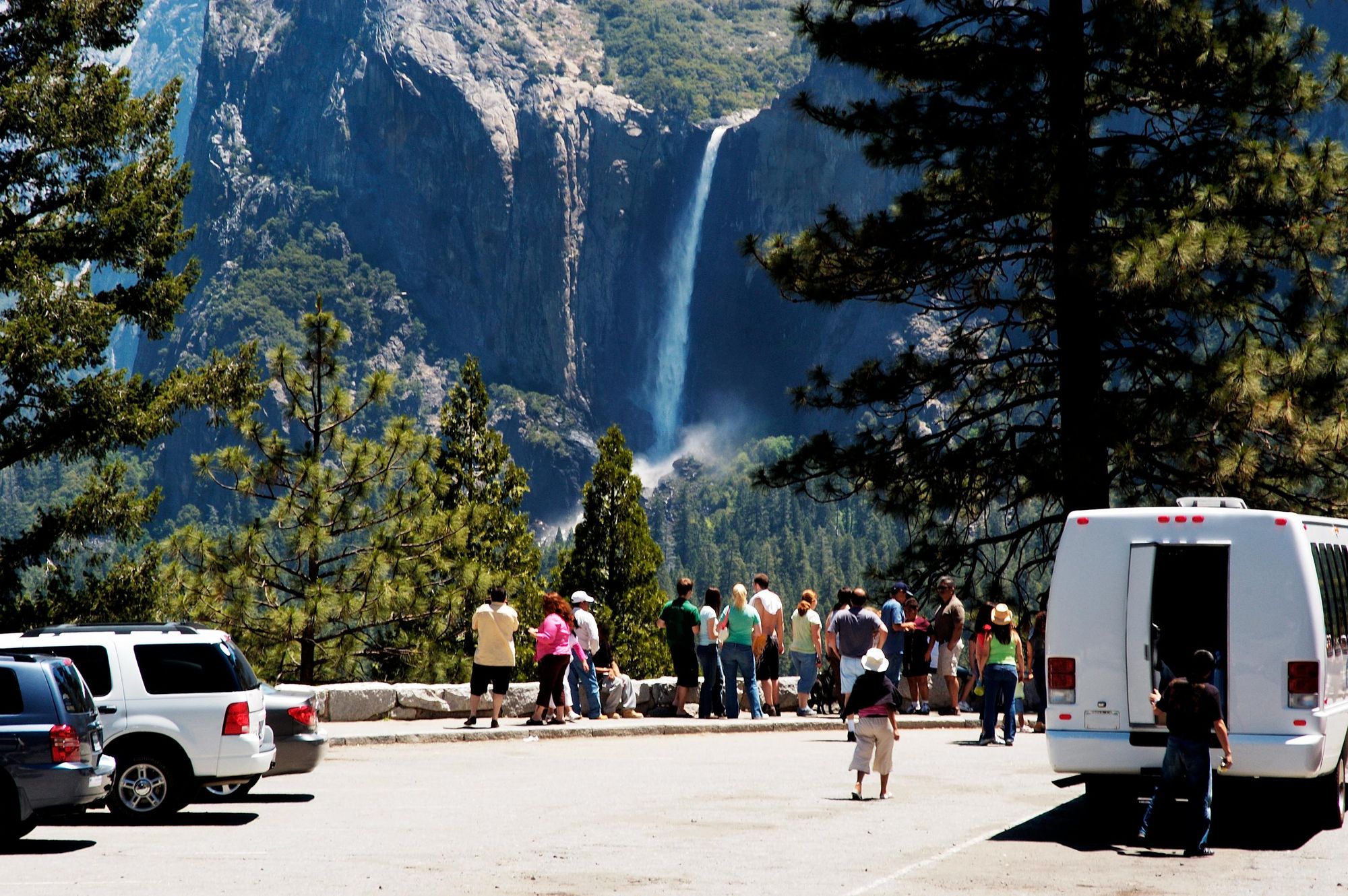
By train: Sadly there is no current rail service which reaches Yellowstone National Park. The rail provider, Amtrak, does run joint rail and bus services though. So, for example, you can get a San Francisco to Oakland bus, a short Oakland to Merced train, and then a bus to Yosemite in around seven hours.
By plane: The gateway to Yosemite National Park is the Fresno Yosemite International Airport (FAT), which is 64 miles (102km) from the park. The largest airports near Yosemite are San Francisco International (SFO), Oakland International (OAK), San Jose International (SJC) or Sacramento International (SMF). Each of these airports is around a three-four hour-drive to Yosemite.
By bus: Cities throughout California, and in parts of the rest of the US, offer bus options to reach Yosemite. For example, from San Francisco, you could get a Greyhound to Merced, then transfer to a regional bus to get you to the park. The YARTS bus is one of the best regional services for getting to Yosemite.
Read more:
- The Best Day Hikes in Yellowstone National Park
- A Guide to Denali National Park in Alaska
- Hike the Great National Parks of the Western USA
Inspired? Check out our range of adventure holidays across North America, including multi-day hiking trips in Yosemite National Park.


